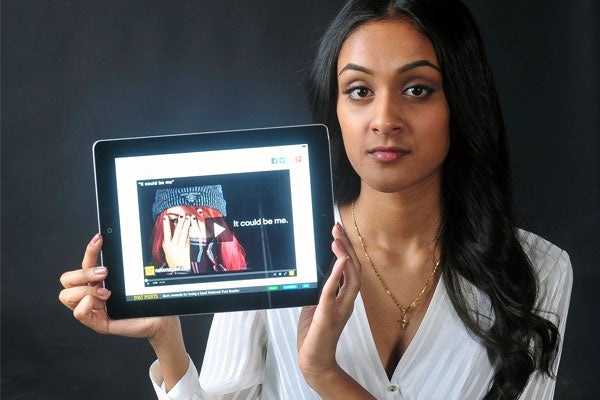
Silent No More: UTSC student Jennifer Lee explores one of Canada's most crucial issues
Published: April 2, 2015
On November 8, 2014, 16-year-old Rinelle Harper was sexually assaulted and left for dead near the Assiniboine River in Winnipeg – just months after 15-year-old Tina Fontaine was murdered, her body found in the Red River.
Harper survived the attack. Her story, and that of Fontaine, provoked outrage and highlighted a disturbing trend in Canada of violence against Indigenous women prompting renewed calls for a national inquiry into the problem.
Against this backdrop Jennifer Lee, a fourth-year student in the University of Toronto Scarborough’s joint journalism program, was offered an experience she will never forget.
Invited to join a team of five journalists sent to Winnipeg by the National Post, Lee became part of a unique project called Silent No More. The aim was to offer 12 Indigenous girls from Maples Collegiate, Winnipeg's second-largest public school, a platform to tell their personal stories of violence against women.
The first challenge, Lee says, was gaining their trust. “We were concerned that the girls wouldn’t open up, that they would think we had our own agenda and we were just parachuting in to probe them for a quote,” says Lee.
To overcome this barrier Lee and the team began opening up to the girls with their own stories and experiences of being bullied in school for being minority students and the children of immigrant parents. “It didn’t take long to show that we cared, that we were there to help them tell their stories.”
The stories were as powerful as they were heartbreaking. The majority had experienced a loved one in their life either disappear or murdered.
They shared stories of being followed at night by men in cars and treated as prostitutes. They talked about not trusting the police, who they say are not doing enough to protect them. They opened up about their aspirations and dreams. They also spoke of the negative stereotypes of aboriginal women often portrayed in the media.
“I went with one girl to an area of downtown Winnipeg that she walks through on her way home. We took the same path, at night, where she’s been followed and propositioned over and over again,” says Lee. “It was a surreal experience.”
They also spoke of issues many Canadians may be unfamiliar with, like the discrimination faced by girls who return to their reserve after pursuing an education in the city. “They’re insulted, called ‘whitewashed’,” says Lee. “All they want to do is return home but in many cases they’re not welcomed back.”
There have been nearly 1,200 cases of murdered and missing aboriginal women in Canada over the past 30 years. The situation is so dire – Indigenous women are three times more likely than non-Indigenous women to suffer assault, abuse and threats of violence – that the federal government recently organized a national roundtable on missing and murdered aboriginal women. More recently, a United Nations committee called for a national inquiry to investigate the issue.
“What’s shocking to me is how casual the girls were in sharing their experiences. It’s just a normal part of their existence,” says Lee. “It really hit me how much we take our circumstances for granted. We’re all Canadians and I’m not that much older than they are, but their experience is so unique.”
In addition to helping the girls express their stories through photographs, Lee also guided them through the social campaign #AmINext, created in response to violence against aboriginal women.
Lee, who is currently completing an internship with CBC Radio, also helped produce a two-minute video,“It Could be Me,” as part of the project. While helping the girls share their stories was a powerful personal experience, she was moved more by their desire to enact change.
“They really wanted to tell the world that the stereotypes aren’t true, that aboriginal girls are strong,” says Lee. “More than anything they want something to be done and they want their stories to be told.”



